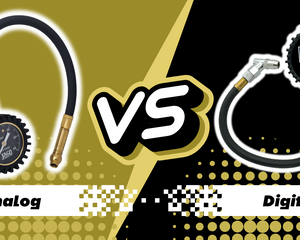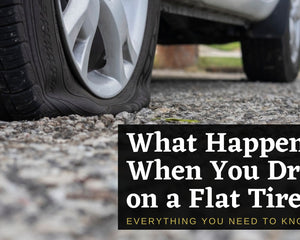
Ever wondered what those numbers and letters on your tires actually represent? They are not just there for decorative purposes but provide vital information about the tire’s specifications and capabilities. Each part of this alphanumeric code has a specific meaning that contributes to the overall functionality and suitability of the tire for different vehicles and driving conditions.
Typically, a tire sidewall code looks something like this: 215/60R17 96H. To help you decode this, think of it as a quick reference guide to your tire’s identity:
- 215 - Indicates the tire’s width in millimeters from sidewall to sidewall.
- 60 - Represents the aspect ratio, or the height of the sidewall expressed as a percentage of the tire’s width.
- R - Stands for Radial, which means the layers run radially across the tire.
- 17 - The diameter of the wheel rim that the tire is designed to fit, in inches.
- 96 - This is the load index, indicating the maximum weight the tire can support.
- H - Denotes the speed rating, which tells the maximum speed capability of the tire under optimal conditions.
Understanding each of these elements is key to ensuring that you choose the right tire for your vehicle and maintain it properly. In the following sections, we'll delve deeper into what each part of the tire code means and how it affects your vehicle’s performance.
Width Explained
The first number on your tire's sidewall indicates the tire's width. Measured in millimeters, this number represents the distance from one sidewall to the other. For example, if the tire code starts with 215, it means the tire is 215 millimeters wide. But why is this important?
Width is a critical factor in your tire’s contact with the road. Wider tires have a larger contact area, which can provide better traction and grip, especially in wet conditions or while maneuvering sharp corners. However, wider tires can also increase fuel consumption and may generate more road noise. On the other hand, narrower tires may offer better fuel efficiency and less road noise but might not perform as well in preventing hydroplaning or in terms of stability during tight turns. Therefore, choosing the right width for your vehicle’s tires is a balance between these factors, depending on your usual driving conditions and performance needs.
Aspect Ratio Explained
The aspect ratio of a tire, indicated by the second number in the tire size code, describes the height of the tire's sidewall as a percentage of its width. Continuing with our previous example, a tire marked as 215/60 has an aspect ratio of 60%. This means that the height of the sidewall is 60% of its 215 mm width.
The aspect ratio has a direct impact on your vehicle's ride quality and aesthetics. Tires with a lower aspect ratio, commonly known as low-profile tires, have shorter sidewalls that offer greater handling and responsiveness. They also lend a sportier appearance to a vehicle. However, because these tires have less sidewall to absorb shock, they can lead to a firmer ride. Conversely, tires with a higher aspect ratio have taller sidewalls, which can absorb road irregularities better, resulting in a smoother ride. These characteristics make them ideal for drivers prioritizing comfort over performance.
Construction Type
Following the width and aspect ratio, you'll often find a letter that indicates the type of construction used in the tire's design. The most common letter is R, which stands for Radial. This type of tire construction features layers known as plies that are arranged at 90 degrees to the direction of travel, providing enhanced strength and durability. Radial tires are known for their longevity and performance, making them a popular choice for passenger vehicles.
Another type of tire construction is Bias, indicated by the letter B. Bias tires have plies that are layered at angles to each other, typically around 30 to 40 degrees. This construction allows for a more pliable sidewall, providing a comfortable ride at lower speeds but less stability and heat dispersion at higher speeds compared to radial tires. Bias tires are often used in heavier vehicles and off-road applications where the softer ride is beneficial.
Diameter Explained
The next number in the tire code sequence represents the diameter of the wheel that the tire is designed to fit, measured in inches. For instance, if the tire code ends with 17, it means that the tire is intended for use with a 17-inch wheel. This measurement is crucial for ensuring that the tire fits perfectly on the wheel rim, as a mismatch can lead to poor vehicle performance and safety issues.
It's important to choose tires that are compatible with your vehicle's wheel size. Installing a tire meant for a smaller or larger diameter wheel can lead to inaccurate speedometer readings, improper handling, and potential damage to the vehicle's suspension system. Always check your vehicle’s manufacturer guidelines or consult with a tire professional when considering different wheel sizes to ensure optimal performance and safety.

Load Index and Speed Rating
The load index and speed rating are essential parts of a tire's code, providing critical information about a tire's capacity and performance. The load index is a numerical code which signifies the maximum weight a tire can safely support when properly inflated. For instance, a tire with a load index of 91 can support up to 615 kilograms (or approximately 1356 pounds). This figure is crucial for ensuring that your tires can adequately support your vehicle’s weight, including passengers and cargo.
Common Load Indexes:
- 75 - 852 lbs (386 kg)
- 80 - 992 lbs (450 kg)
- 85 - 1135 lbs (515 kg)
- 90 - 1323 lbs (600 kg)
- 95 - 1521 lbs (690 kg)
- 100 - 1764 lbs (800 kg)
- 105 - 2039 lbs (925 kg)
- 110 - 2337 lbs (1060 kg)
- 115 - 2679 lbs (1215 kg)
- 120 - 3086 lbs (1400 kg)
The speed rating, usually represented by a letter at the end of the tire code, indicates the maximum speed a tire can safely maintain over time. A speed rating of H, for example, means the tire can handle speeds up to 130 miles per hour. Selecting a tire with an appropriate speed rating is vital for safety and performance, especially if you often drive at highway speeds.
Common Speed Ratings:
- L - 75 mph (120 km/h)
- M - 81 mph (130 km/h)
- N - 87 mph (140 km/h)
- P - 93 mph (150 km/h)
- Q - 99 mph (160 km/h)
- R - 106 mph (170 km/h)
- S - 112 mph (180 km/h)
- T - 118 mph (190 km/h)
- U - 124 mph (200 km/h)
- H - 130 mph (210 km/h)
- V - 149 mph (240 km/h)
- W - 168 mph (270 km/h)
- Y - 186 mph (300 km/h)
- Z - Over 149 mph (240 km/h)
When selecting tires, consider your vehicle’s requirements and your typical driving conditions. For a family SUV, a higher load index might be more important, while a sports car might benefit from tires with a higher speed rating to match its performance capabilities.
Deciphering Additional Markings
Beyond the standard tire code, tires may have additional markings that provide further information about their use and capabilities. One common marking is M+S, which stands for Mud and Snow. This designation indicates that the tire meets specific criteria for performance in muddy or snowy conditions, making it suitable for winter driving.
Another specialty marking to look out for is the run-flat indicator, often marked as RFT or similar. Run-flat tires are designed to maintain their integrity and continue performing for a short period even after being punctured, allowing you to drive safely to a service location despite a flat.
Practical Tips for Checking Your Tires
Regular checks of your tire sidewall information are crucial for maintaining your vehicle's safety and performance. Here are some practical tips:
- Monthly Inspections: Take a few minutes each month to inspect your tires for wear and tear, checking the sidewall for cracks, cuts, or bulges that might indicate internal damage.
- Use a Tire Gauge: Keeping tires inflated to the correct pressure is vital for optimal performance and fuel efficiency. Use a reliable tire pressure gauge, like those offered by JACO, to check your tires' air pressure regularly.
- Check Tread Depth: Use a tread depth gauge to measure your tires' tread. This will help you determine when it’s time to replace them – typically when tread depth falls below 2/32 of an inch.
By following these simple tips, you can ensure that your tires are always in top condition, providing safe and reliable performance on every journey.
Final Thoughts
We've taken a comprehensive look at what the numbers and letters on your tire sidewalls mean, each serving a vital role in identifying the right tire for your vehicle. From the tire's width and aspect ratio, which influence handling and ride comfort, to the construction type and diameter details that ensure a perfect fit for your wheels. Understanding the load index and speed rating is essential for safety and performance, while additional markings can give you an edge in specific driving conditions.
Given the complexity and importance of choosing the right tire, it's always a good idea to consult with tire professionals. They can provide guidance based on your specific vehicle type and driving needs, ensuring that your tires offer the best performance and safety.
What You Can Do
Ready to take your tire maintenance to the next level? Explore JACO's extensive range of high-quality automotive tools. Whether you're in need of a durable tire pressure gauge or reliable equipment for tire installation and repair, JACO has the tools to ensure your vehicle operates smoothly and efficiently.




